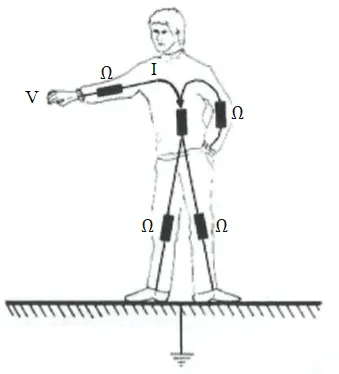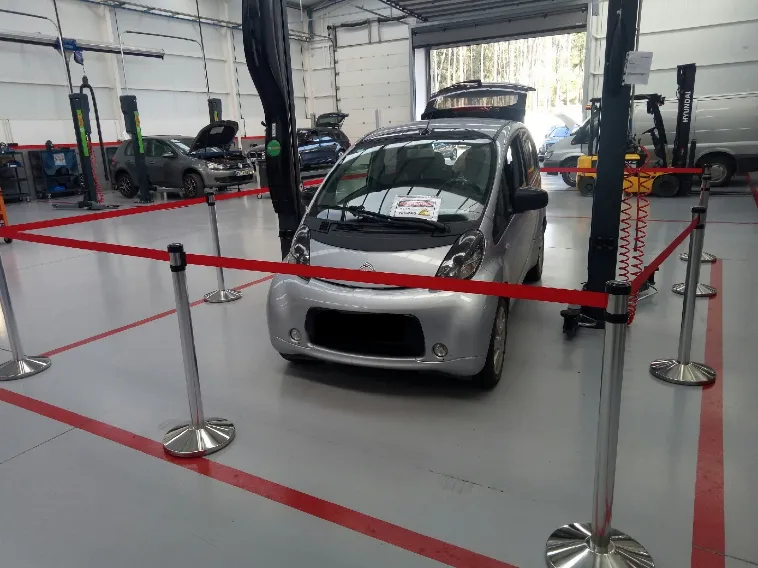Maintenance on electric and hybrid vehicles is, for various reasons, simpler than maintenance performed on traditional vehicles, i.e., vehicles with internal combustion engines. This article will focus on the maintenance of electric and hybrid vehicles, specifically regarding the electrical components, and the safety requirements necessary for intervention.
The main distinction in the maintenance of the two types of vehicles is naturally the type of propulsion, with the greater simplicity associated with maintenance in the case of hybrid vehicles being directly related to the electrical component of the vehicle. The benefits of regenerative braking, the smaller number of moving components and fluids compared to traditional vehicles, mean that there are fewer maintenance costs associated with electric or hybrid vehicles.
Regenerative Braking and Fluids"Regarding regenerative braking, since the mechanism recovers kinetic energy by opposing the vehicle's movement, the energy that would dissipate through the brake discs and pads is converted into electrical energy and stored in the high-voltage battery. Thus, it is natural that not only wear on the vehicle's braking system but also associated costs are substantially lower. However, it should be noted that this does not mean that the need for maintenance in the braking system should be entirely neglected, as it may compromise the safety of vehicle occupants.
Regarding fluids, the equipment comprising electric and hybrid vehicles generally have less need for fluids associated with their operation, thus not requiring associated maintenance. Consequently, some manufacturers make it impossible to access fluids, isolating and sealing them within the vehicle's structure or components. However, similar to traditional vehicles, the coolant fluids for the high-voltage battery, brake system fluids, and windshield washer fluid reservoir must be maintained and checked during any maintenance procedure. In some manufacturers, there are even gearbox fluids that need to be periodically replaced.
Low and High-Voltage BatteriesLow-voltage batteries or 12V batteries are components common to all vehicles. In electric and hybrid vehicles, this battery is essential for ensuring power supply to the high-voltage system and the operation of the vehicle's accessory components, such as certain functions of the onboard computer, windows, airbags, and interior and exterior lights. Although not included in maintenance plans designed by manufacturers, its verification should be ensured.
High-voltage batteries do not require periodic maintenance. However, as the component responsible for the vehicle's propulsion, it is extremely important to ensure its correct operation. This component tends to become less efficient over time; however, intervention in the high-voltage battery is recommended only when the vehicle displays an error message or exhibits abnormal behavior. Intervention in the high-voltage battery involves replacement with a new battery or testing and replacement of individual cells or internal battery modules.
The examples presented allow us to conclude that, compared to traditional vehicles, maintenance is much more simplified due to fewer components needing replacement or intervention. However, this does not mean that the intervention skills of technicians are dispensable. In terms of safety during intervention, especially due to the electrical component of vehicles, precautions must be doubled to prevent accidents.
Unlike traditional vehicles, the electrical working voltage of the electrical component of electric and hybrid vehicles can cause serious health damage to operators. In many systems, electrical voltages reach 600V. The danger does not result directly from the electrical voltage but from the combination of electrical voltage with other electrical concepts and characteristics of the propagation medium, specifically, electrical voltage with current intensity, duration of the effect, frequency and abrupt variation of the current, contact pressure, and human body resistance. According to Ohm's law and as represented in Figure 1, electrical voltage is equal to the resistance of a body multiplied by the current intensity passing through that body. In this sense, a high electrical voltage (V), combined with reduced human body resistance (Ω), means high electrical current intensity (I). On the contrary, the higher the contact resistance with the ground (for example, rubber soles), the lower the current passing through the body. That said, the severity of bodily harm in the event of an accident is directly influenced by the combination of these factors.

Figure 1 - Ohm's Law
Accidents involving electricity can be avoided if precautions are taken during intervention. The operator should perform procedures while avoiding contact with active parts of materials or electrical equipment and avoiding contact with masses that may accidentally become energized. With this in mind, measures should be taken to:
Do not touch naked elements of an electrical installation;
Check if the insulations are in good condition, but do not damage the insulation of wires and cables;
Do not pull on the feeding cables of the circuits to disconnect them;
Do not make improvised connections.
In addition to common precautions, operator training and the use of personal protective equipment, hereinafter referred to as "PPE," are essential.
Intervention in specific high-voltage components should only be carried out by technicians with level 3 training in medium and high voltage.
Personal Protective Equipment (PPE)
Regarding PPE, intervention in specific high-voltage components requires the use of insulated equipment with high electrical resistance. These equipment should be standardized and replaced whenever damaged.
Insulated gloves class 0 should be used, certified for 1 year of use. This means that the date of first use should be recorded to ensure that the validity is not exceeded.
Safety boots are part of the PPE; these should ensure certification according to standard SP3. In this context, safety boots cannot have any metallic components, and the sole and toe should be constructed of Kevlar or other non-conductive material.
In terms of operator safety, goggles/visors are necessary to prevent electrical arcs and chemical compounds from the battery and should have anti-fog protection.
Safety ProceduresAs a complement to PPE, the operator should follow procedures and use tools that reinforce personal safety and ensure the vehicle is de-energized.
The insulated tool at 1000V should guarantee the necessary electrical resistance for the operator to disassemble and assemble high-voltage system components.
Similar to tools, insulating blankets or mats also function as complements to PPE. The insulating blanket should guarantee insulating properties up to 1000V, and, in the case of the mat, used for wrecked vehicles, interventions on benches, or breakdowns indicating problems in the electrical systems, it should ensure isolation up to 50000V.
In the event of an electrocution accident, a rescue pole should be used. This tool is used to remove the shocked operator and should be composed of a non-conductive material and have sufficient length to prevent an electrical arc.
Vehicle SafetyRegarding the vehicle, before starting any intervention on high-voltage components, it is necessary to secure the vehicle, respecting the operations mentioned below.
Placing signage and sealing the work area are the procedures that initiate intervention on the vehicle. According to Figure 2, retroreflective danger warning signs approved for this purpose should be placed around the vehicle whenever work is being done on the high-voltage component. The work area around the vehicle should be delimited by at least 1.2m from the vehicle with pins, chains, and plastic bases, the latter should be red and white and not be supported by water or other conductive material.

Figura 2 - Vedação da área de trabalho
During the intervention itself, safety procedures should be followed to de-energize the vehicle. It is extremely important that the procedures be performed in the following order:
Turn off the ignition and remove the key from the Smart Key system detection zone (if applicable)
Use safety equipment (insulated gloves and footwear).
Locate and remove the safety lock plug (consult the vehicle manual).
Wait for about 10 to 15 minutes or more to discharge the high-capacity capacitors of the inverter.
Measuring the voltage at the inverter terminals - verifying 0V.
Isolate the high-voltage connector with insulating tape.
The high-voltage safety lock is in different locations depending on the various car manufacturers. It has been conventionally agreed that all high-voltage cables and safety locks are identified in orange.
Each element of the equation means and should be used in the units of measure of Table 1.
In terms of maintenance, through the examples mentioned above, it becomes unequivocal that the after-sales service of the future will have to reconfigure the workshop structure and rethink intervention procedures in vehicles. The characteristics of the systems lead to the need to adapt resources, training them on the specificities of each electrical component and, above all, on the safety procedures that must be ensured during intervention.












